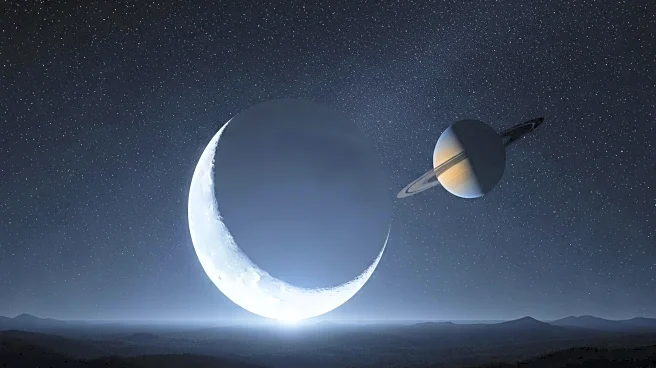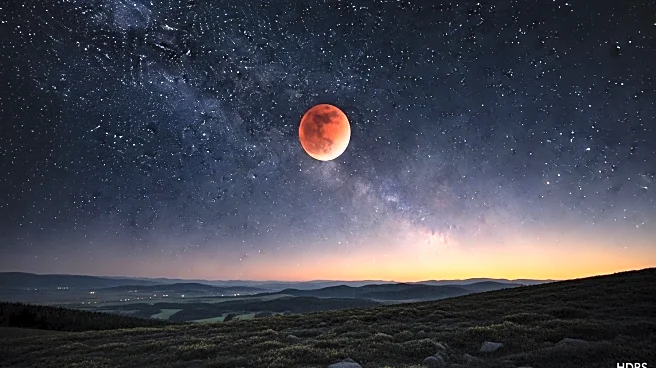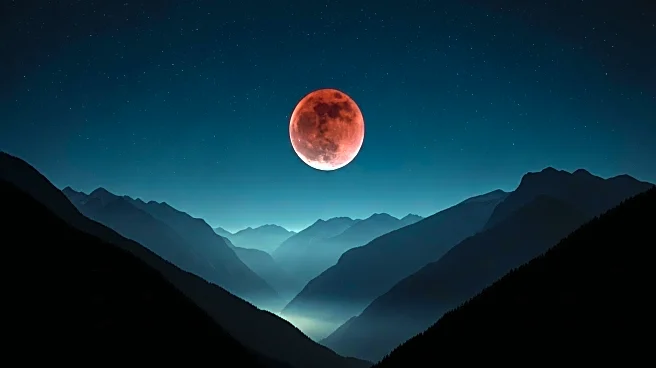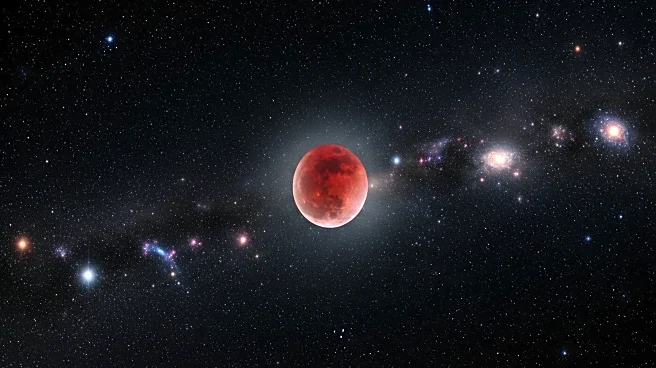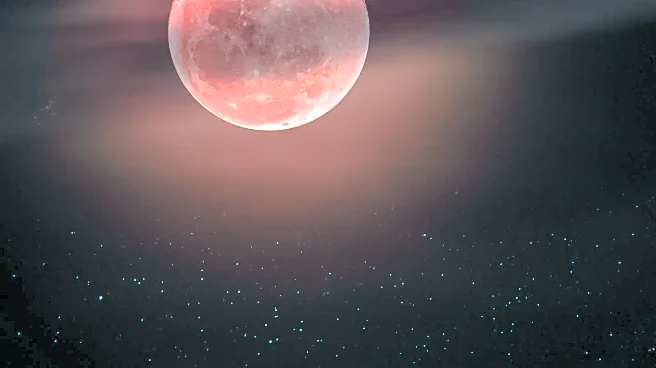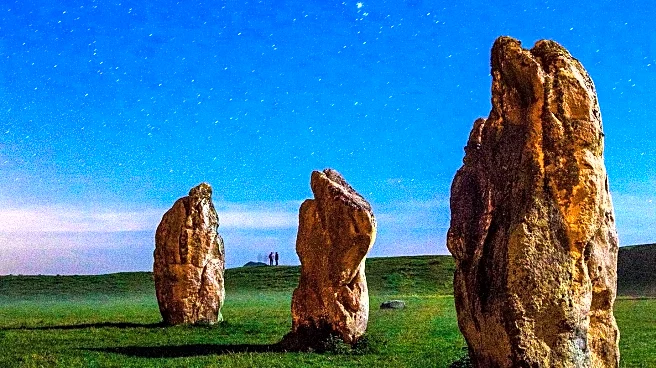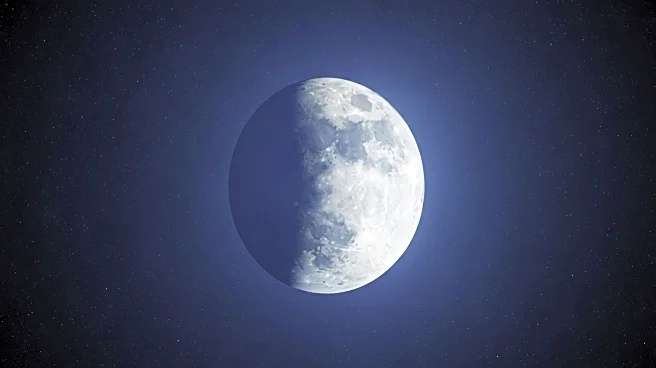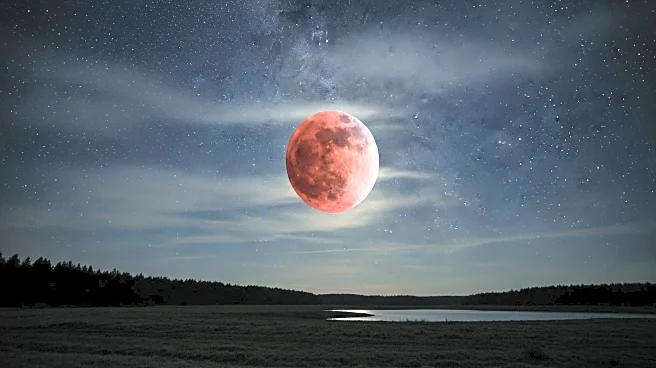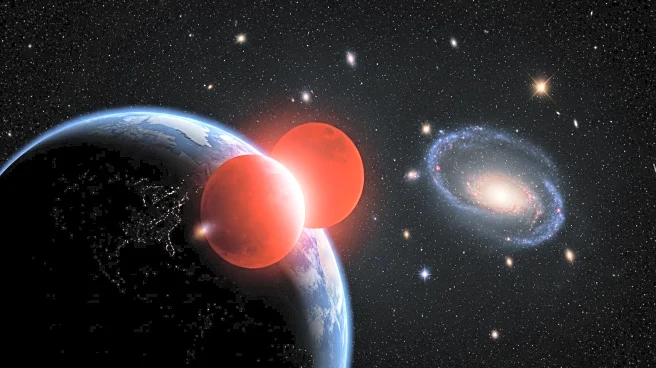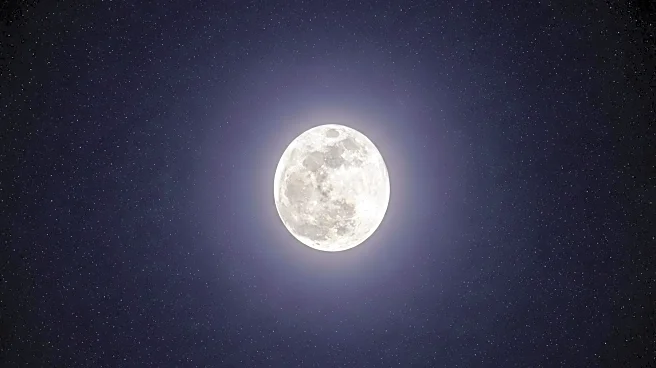What's Happening?
On September 8, stargazers will have the opportunity to witness a celestial event as Saturn and the waning gibbous moon appear close together in the night sky. As the sun sets, Saturn will rise less than 5 degrees to the right of the 96%-lit lunar disk, positioned below the stars of the constellation Pisces. This event occurs just one day after a total lunar eclipse, which gave the moon a rusty red hue. The conjunction provides an excellent chance for observers to explore the lunar maria, the dark basaltic plains on the moon's surface formed by ancient lava flows. Additionally, with a telescope of 8 inches or more, viewers can observe Saturn's Cassini Division, a gap in its rings, and possibly spot Neptune, appearing as a bluish dot near Saturn.
Why It's Important?
This celestial event is significant for both amateur and professional astronomers, offering a rare opportunity to observe two major celestial bodies in close proximity. Such events can spark public interest in astronomy and science, encouraging educational activities and community stargazing events. For photographers and astronomy enthusiasts, it presents a chance to capture unique images of the night sky. The event also highlights the importance of preserving dark skies, free from light pollution, to ensure such natural phenomena can be enjoyed by future generations.
What's Next?
Following this event, stargazers can look forward to more astronomical occurrences, such as meteor showers and planetary alignments, which continue to captivate and educate the public. Astronomy clubs and observatories may organize viewing events, providing telescopes and guidance for those interested in exploring the night sky further. Additionally, advancements in telescope technology and astrophotography equipment will continue to enhance the experience of observing celestial events.
Beyond the Headlines
The conjunction of Saturn and the moon serves as a reminder of the vastness and beauty of the universe, encouraging a sense of wonder and curiosity about our place in it. It also underscores the importance of scientific research and exploration, as understanding celestial mechanics can lead to broader insights into the workings of our solar system and beyond. Furthermore, such events can inspire future generations to pursue careers in science, technology, engineering, and mathematics (STEM) fields.
